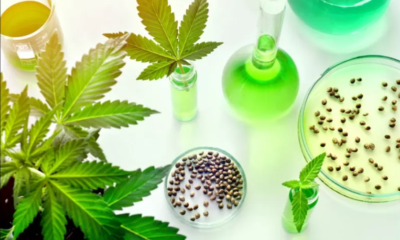Blogs
What Is Smoking Cannabis Clone Like?

The world of cannabis cultivation is ever expanding and without a doubt as more studies are conducted, more and more effective techniques of cloning cannabis plants will be developed.
The global marijuana market was valued at a staggering “USD 10.60 Billion in 2018’. It is projected to get to USD 97.35 Billion by late 2026. With this ready market that threatens to break its breeches, growers are always on the lookout for better, faster, more effective ways of producing quality bud.
One such avenue is cloning cannabis plants. As futuristic as it may sound, this is actually a very simple concept. It normally involves cutting off a section of the “parent plant”, allowing it to develop roots and transplanting it. There are many advantages to cloning your cannabis plants, but the most significant one is that it is free!
What then are the uses of cannabis clones? Can cannabis clones be smoked? Is it safe? What are the effects?

Why Clone Cannabis Plants?
There are two main techniques one can use to reproduce cannabis: seeds and cloning.
Seed reproduction is sexual whereby pollination crosses the male and female cannabis plants resulting in new seeds, which can then be planted. When you buy quality cannabis seeds, each seed will comprise genetics from both the mother and the father plants. On germination, you will realize that your individual plants (phenotypes) will vary in both appearance and later on, in properties. This is because they are likely to express the genetics passed on by their parents in different manners. This difference is why you are not the exact replica of your siblings.
Cloning however is asexual and involves the cutting off of a part of the original plant, referred to as the “mother plant” and cultivating it into a whole new plant that is a replica of the original.
While naturally reproduced plants tend to have variations in phenotype and other characteristics, clones are a reproduction of the original plant to a tee. Cloning replicates features such as genetic profile, flavor, effects, grow time, yields, and cannabinoid profile of the mother plant.
Creating a clone ensures desired genes are passed on and you can continue enjoying your favorite pot for a long time, without variations.
What Is Smoking Clone Like?
By now you might be feeling like you have been transported into a scifi movie. Are clones viable? You might ask? Would smoking then cause mutations in you?
Slow down…
Clones are actually very stable and are an exact replica of the plant they were cloned from. And no, smoking clone will not cause you to grow an extra nose.
The experience and effects of smoking clone are exactly like what you would experience if you smoked the original bud. If the “mother bud” was luxurious, delicious, pungent and potent, that is the exact experience you will have smoking its clone.
Most of the time, the end user doesn’t even get to know whether the quality bud they have purchased is from a germinated cannabis plant or is the yield of a cloned plant.
It is however notable that the experience of smoking a clone is likely to be a good one because a lot of time and care is taken in selecting only the best for reproduction. A poor variety is not very likely to be cloned. You should therefore be prepared to experience a top-notch cannabis experience if you smoke a clone.
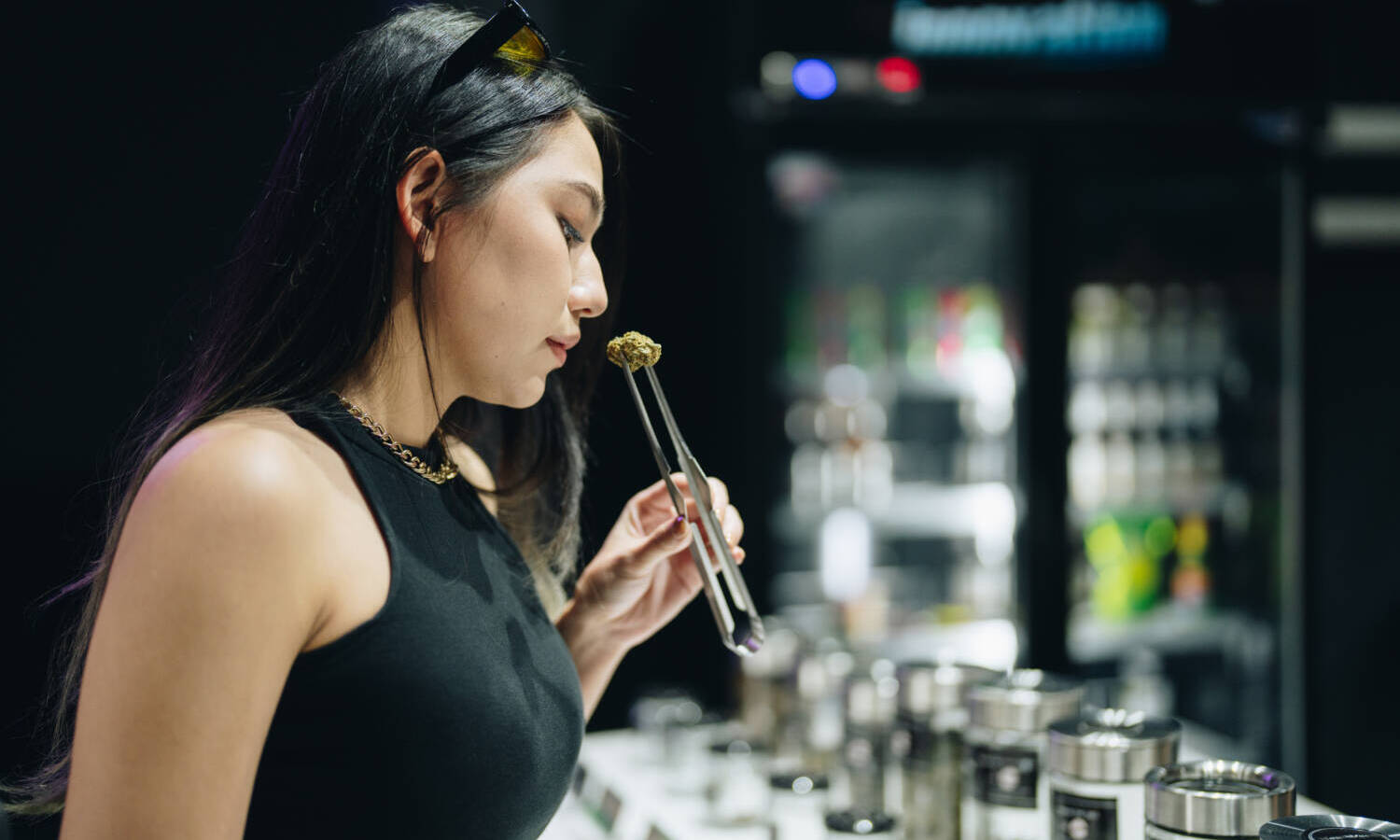
What is Clone Smoking?
As we have described above, smoking cloned buds is the same as smoking the bud of fertilized or feminized cannabis.
However, there are other circumstances under which you might find yourself in a position to smoke clone. This include clone that is discarded during:
- The clones of unsuccessful phenotypes discarded in the earlier stages in the plant cycle.
- The clones that are discarded at maturity, when they happen not to be the best in the “group”. Most times, it is sometimes important to wait until the plant has fully grown and the bud has matured before you can test the qualities of the different phenotypes to decide which ones to keep. When this happens, you are left over with cloned buds which can be used instead of being disposed of.
During the cloning process, several phenotypes are cultivated and monitored in order to pick the ones that are most prolific. To enable this process, each of the phenotypes is cloned at different stages to ensure that if it happens to be the winning star, it can be reproduced from either the vegetative or flowering stage.
At the end of “the race”, phenotypes that are not successful are “destroyed”, along with their clone. This can be the perfect opportunity to smoke the clone instead of letting it go to waste.
The clone that reaches full maturity is off course smoked like any other weed. However, the clone that does not reach maturity and is either written of at the vegetative or flowering phase can still be used in this manner:
- Cloned Cannabis plant stems: Though smoking them might be a waste of time and may induce a bout of coughing like you have not experienced in a while, you can use the leaves to make cannabutter, cannabis topicals and cannabis tea. It is important to note that you will require massive quantities to be able to make an effective impact.
- Cannabis cloned leaves. You would have to smoke the sugar leaves or fan leaves of the clone for you to get any effect. The sugar leaves are situated right next to the buds and often have a fine white coating. The fan leaves are bigger and situated further away but they too have significantly less, but adequate amounts of THC. You could also make hash and edibles using these leaves.
- Immature bud. Cannabis clones that have been “discarded” before maturity can still be harvested for the immature bud, It turns out it is quite the treat. Though they might not be as potent, they will still give you a good high.
- Roots. While smoking cloned cannabis roots might not get you anywhere, it happens juicing them might actually have a host full of benefits for you. They could apparently be a strong medicine for inflammation, to provide liver support, reduce pregnancy difficulties, boost brain health, and some people even claim that it kills cancer cells. So don’t smoke the root…juice it!
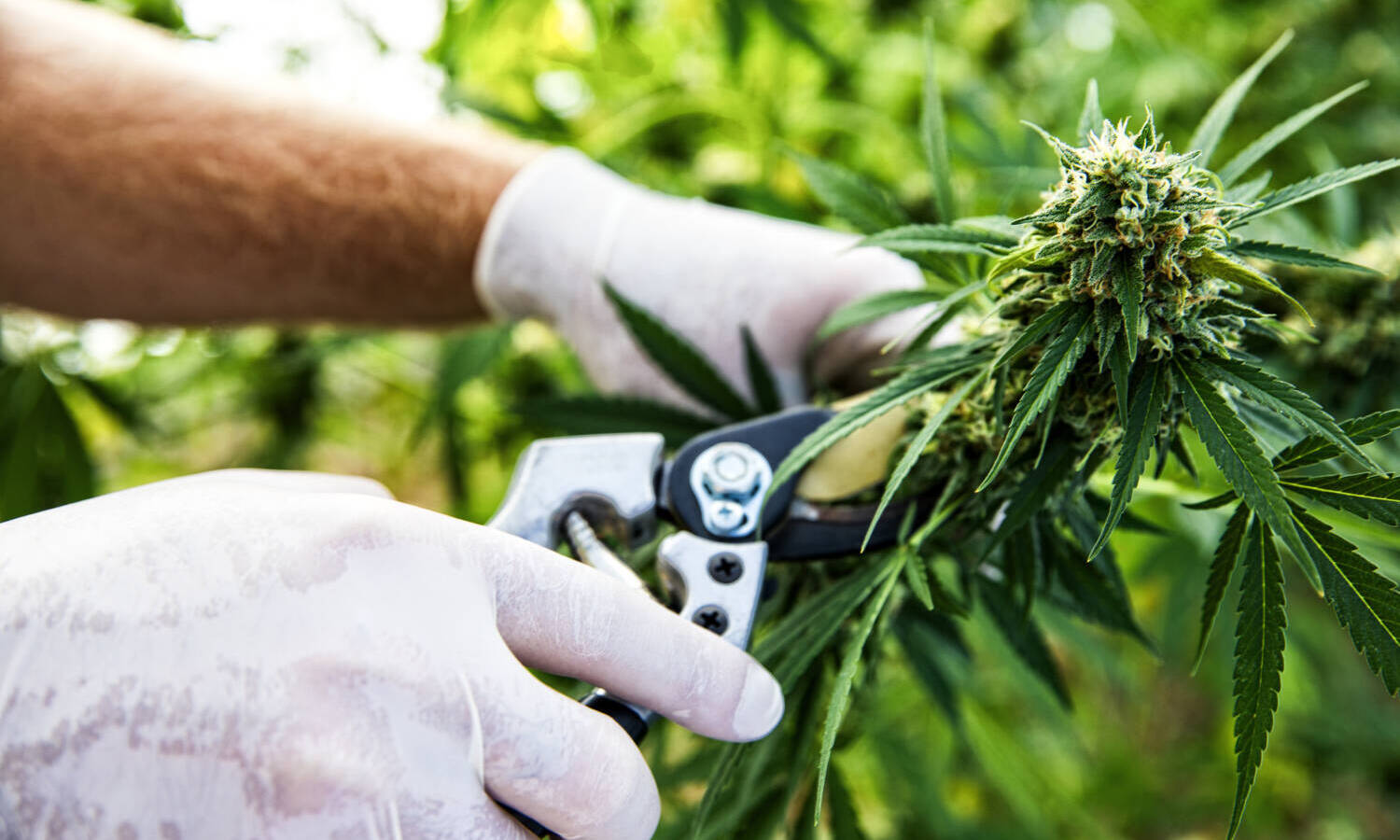
Choosing the Right Mother Plant to Clone From
As we mentioned earlier, cloning is basically about retaining and duplicating the best attributes of a strain. This requires that you are very selective about which phenotype to clone from.
Some characteristics you might look out for when selecting the cannabis plant to clone are:
- Pungent or Exotic or aromas
- Smooth, sweet, and bold flavors
- High resin production, and powerful potency
- Manageable heights (in case you are growing indoors), and robust growth
- Fast flowering time
- Resistance to pests, pathogens, and molds
- Large yields
What Are the Benefits of Cloning Cannabis Plants?
As cloning is rather quickly overtaking use of seeds, even feminized ones, let’s look at some reasons why growers might choose this method of reproduction:
Consistent growing – As we have explained in above sections, cloning the cannabis plants allows for the maintenance of the desired genetics in properties such as yield, growth rate, potency, flavor, taste, appearance, and so on.
Cost friendly – This is mostly because you do not have to purchase fresh seeds and in fact use the plants you already have. Also, many of the cloning techniques are actually very simple and inexpensive.
Convenient – Not only is it easy to learn the cloning process, it is also relatively not hard to implement. It is a straightforward process that can be learnt by even the most inexperienced of growers.
Speed – Depending on the stage the cut was taken off the mother plant, cloned cannabis plant can have a relatively fast turnover time.
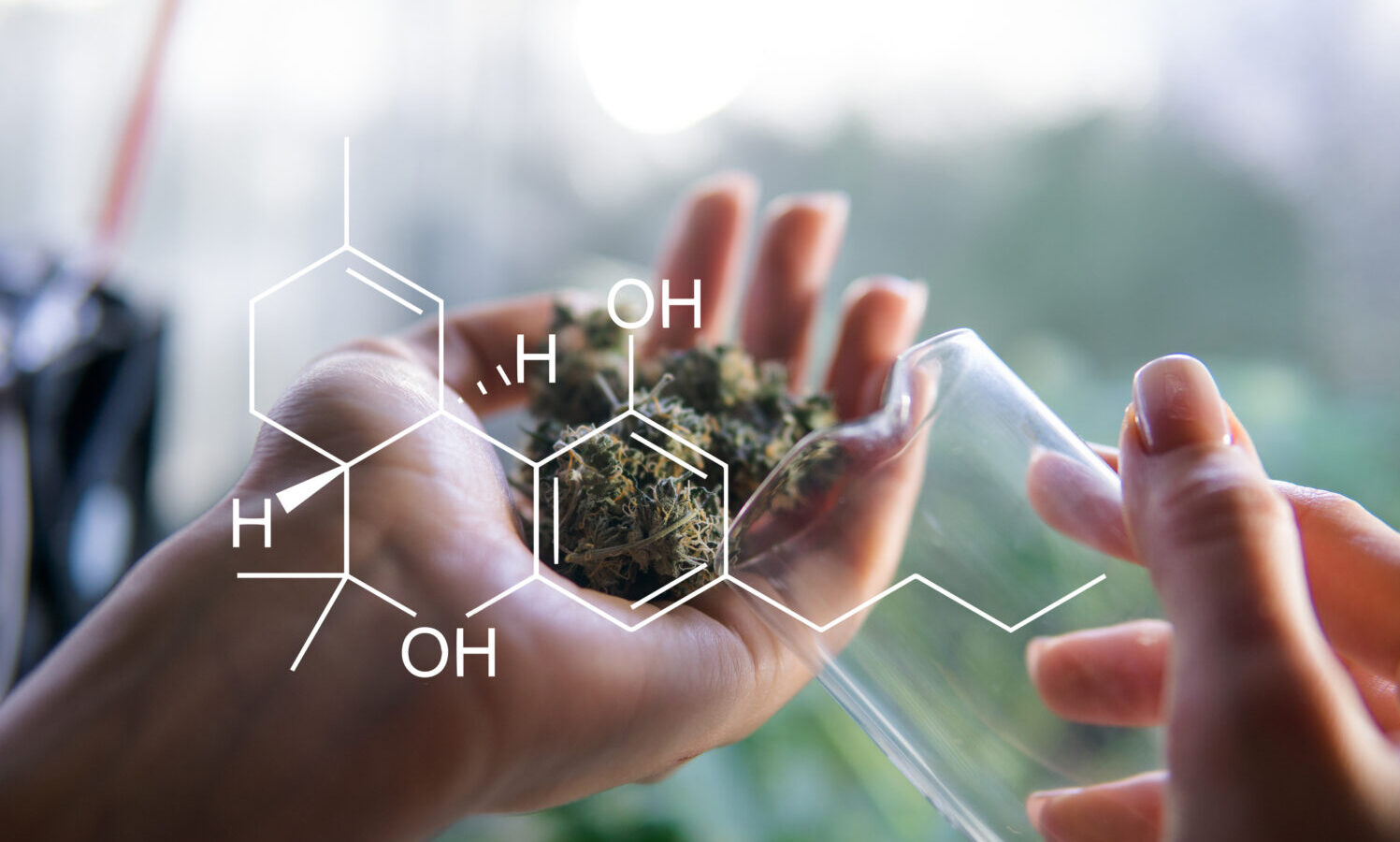
Is Clonal Degradation a Myth?
Now that we know so much about cloned cannabis and the effects of smoking it, let’s find out whether the basic considerations of maintained genetics hold over generations.
Clonal degradation or what some people would call genetic drifting is a concept that is contested fiercely throughout the cannabis world.
While some argue that it is a myth, others insist that it is a real phenomenon.
Cannabis chat rooms are filled with arguments on the process of clonal decay with some pointing a finger at mutation and others cellular degradation to a point the clone becomes “cloned out”. It probably doesn’t help that cloning of cannabis plants has not been around long enough to bear out the actual effects of thorough decay.
However, for the sake of argument and things to look out for, let’s revisit the basics of “high school bio”.
The basic concept is that cloned cuttings will not change their “genetic imprint” as the clone is an exact replica genetically of its mother plant. To illustrate this further, the cellular age of a clone is also exactly the same as that of the mother plant when it was excised. This is to mean, a two-week-old clone taken off a two-and-a-half mother, is in actuality two-and-a-half months old.
Typically, genetic variation stems from sexual reproduction, which is seeds containing different genetic material.
Now that we have established that genetic content does not change in the case of cloning, what exactly would bring about changes?
One theory is that genetic mutations can occur in the course of growth. These would be very slight changes that would only be evident after several generations.
Another theory is that cannabis clones subjected to different environments end up growing and looking different. An under-fertilized clone that finds itself in an environment with low humidity will definitely do worse than a similar clone getting perfect humidity and fertilization at a different location.
Environment without doubt plays a vital role in how the cloned cannabis plant grows and reproduces.
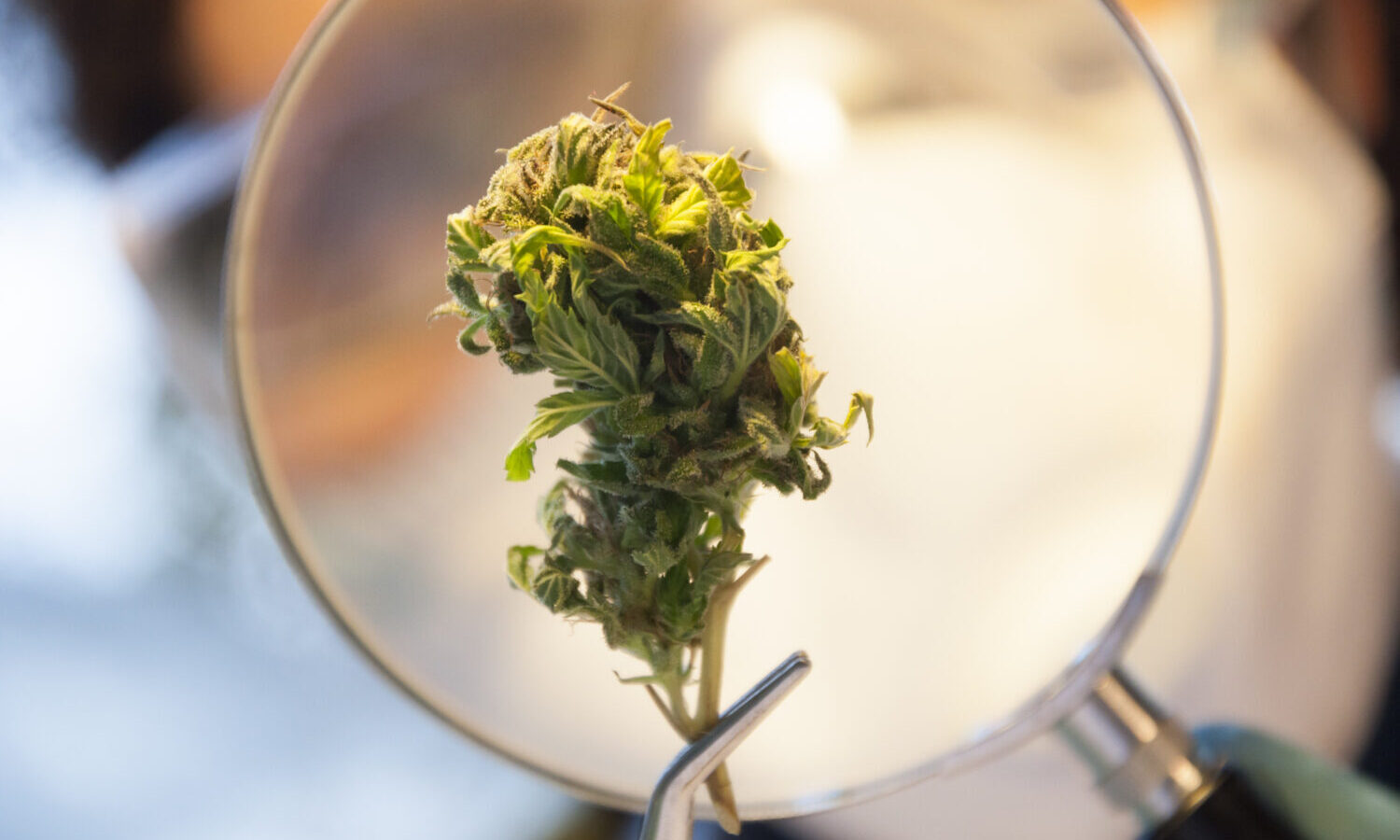
Let’s talk about how the environment affects epigenetics…
The area of epigenetics sheds some light in the understanding of how cannabis clones tend to lose down generations. Epigenetics refers to the outside modifications, or stimuli, that can cause genes to turn on or off. It’s not the genetic code of the clone alters, rather the environmental factors modify genetic potential as well as expression of the clone.
To quote Russell Pace III, the President of the Cannabis Horticultural Association, “Epigenetic impacts on clone health over time are very significant. Without proper mineral nutrition and biological health, the vigor of a clone will diminish over time as it continually is replicated, thus reducing its viability,” .
Genes apparently load the gun, but ultimately, the environment “pulls the trigger”.
Having learnt that successive generations of weed clones are not genetically inferior in any way like we thought, let us discuss the environments that can affect them and alter their original “dispositions”.
Environmental Stressors That Affect Clones
The below are factors that might affect subsequent generations of weed clones in a significant manner:
- Appropriate Humidity
- Maintenance of appropriate light levels- inconsistency with the light cycles in the vital vegetative as well as the flowering cycles
- Soil nutrients
- Water – Under watering or overfeeding
- Incorrect soil pH
- Pesticides can be another stressor that can damage plants when misapplied or applied overzealously.
- Taproots- Clones lack tap roots, and therefore grow less robustly generally
- Cleanliness is critical to clone success. Introduction of bacteria or fungi during the cutting and transfer stage causes infections that produce duds (slow growing plants with low produce).
- Genetic mutations could also occur in subsequent generations of clones. Though still under research, there is some evidence to show that sporadic mutations within the DNA sequencing could occur. Therefore, one should expect slight variations across generations.
Conclusion
The world of cannabis cultivation is ever expanding and without a doubt as more studies are conducted, more and more effective techniques of cloning cannabis plants will be developed, which is music to the ears of all cannabis lovers. As cloning takes root, so does the number of clones that are thrown out in the process of vetting.
We hope we have educated you in the different ways you can smoke your clone so that you do not experience the complete loss of throwing great stuff out with the trash.
Cannabis growers tend to take clones either from mother plants (which are kept constantly in veg) or young vegetative plants that they’ll later switch to flower.
Source: https://thefreshtoast.com/cannabis/what-is-smoking-cannabis-clone-like/
Blogs
Border sales a boost for most marijuana retailers across US

Marijuana sales along state lines are key revenue generators for retail operators in the United States, and new insights suggest a similar business bump along international borders, particularly Mexico.
Data compiled by New York-based wholesale technology platform LeafLink – as well as information gathered from state agencies, quarterly reports and interviews with several cannabis companies – bear that out.
LeafLink analyzed hundreds of ZIP codes at the request of MJBizDaily and found strong links that when new recreational markets open, retailers near borders stock up on inventory significantly more than operators located elsewhere in a state.
Data from the past three years revealed wholesale marijuana products purchased by border stores jumped 140% after the launch of adult-use sales, while retailers located in more interior areas increased purchases by about 80%.
“The growth when a state launches adult-use sales at a border store in terms of purchasing activity is around double the growth of the remainder of the state,” LeafLink Strategy Analyst Ben Burstein told MJBizDaily.
Of course, numerous factors are at play – perhaps none more impactful than the marijuana policies of neighboring states.
That’s why Illinois retailers near Wisconsin, where marijuana possession is illegal, are still attracting Wisconsinites nearly four years after the launch of recreational sales.
There also are retail sales-tax implications, a big reason why St. Louis-areas operators are seeing an influx of shoppers from southern Illinois, where cannabis taxes are at least three times higher than in Missouri.
Meanwhile, border retail in New Mexico is boosting depressed economies along hundreds of miles of its shared borders, drawing stampedes of consumers from neighboring Texas and, more recently, cross-border buyers from Mexico.
Retail shakeup in the heartland
The February launch of adult-use sales in Missouri has caused ripple effects throughout the Midwest.
Missouri holds the rare distinction of bordering eight states, with only Illinois offering recreational marijuana sales.
Missouri’s 6% retail tax on recreational marijuana purchases is also among the lowest in the nation, drawing Illinois consumers across the Mississippi River in droves to buy much cheaper weed.
All in, cannabis sales taxes in neighboring Illinois eclipse 30%, second only to Washington state. And in Chicago, sales taxes can easily top 40%.
Demand is booming in western Missouri, too.
In April, Missouri retailers near the border of Kansas, where marijuana possession is also illegal, told MJBizDaily they were seeing foot traffic increase ninefold after expanding into recreational sales.
The rush of new customers, coupled with cultivation-capacity lags, has led to big spikes in wholesale flower prices and inventory shortages throughout the supply chain.
Retailers, for their part, are trying to keep pace.
To meet consumer demand, wholesale purchases per store in the Kansas City, Missouri, market increased from $97,000 in the quarter before the launch of recreational sales to $491,000 in the quarter after, a whopping 406% jump, according to LeafLink data.
In the St. Louis market, which borders southwestern Illinois, wholesale purchases per store increased nearly 57%, to $610,000, after adult-use sales began.
“The demand’s been bigger than anyone expected,” Burstein said.
A zero-sum game
In marijuana retail, particularly near state borders, it’s a zero-sum game.
The sales boom in the St. Louis market, which has more than 70 stores, has deflated business on the Illinois side of the border, where retailers have lost millions of dollars in sales since Missouri’s adult-use launch, according to quarterly reports and earnings calls.
Top executives at New York-based multistate operator Ascend Wellness Holdings, which has two shops near the Missouri border, cited revenue declines at its southern Illinois stores in recent earnings, saying it has led to suppressed margins that are expected to linger for much of the year.
Florida-based MSO Jushi Holdings, which also operates two Illinois stores near the Missouri border, reported an 8.8% year-over-year revenue decline to $66.4 million in its second quarter, partially attributing the slide to adult-use sales in Missouri.
In an Aug. 11 second-quarter earnings call, Jushi CEO James Cacioppo said total Illinois sales declined 20% from the first quarter and 40% year-over-year.
“I think we under-anticipated the pricing power initially out of the gate that retailers were going to have in Missouri,” Jushi Chief Strategy Director Trent Woloveck told MJBizDaily in an interview.
“The impact was a little bit greater than then we had thought due to that pricing for flower, vapes and infused products.”
In response, Jushi has implemented several initiatives, including adding new promotions and diversifying product SKUs (stock-keeping units) to ease the impact of declines sales in Illinois.
Northern exposure
Market dynamics in northern Illinois, particularly along the Wisconsin border, are a different story.
Wisconsin is among 10 states without a medical or recreational marijuana program.
Illinois counties bordering Wisconsin – including Lake, McHenry, Jo Daviess and Winnebago – accounted for 15.4%, or $239.7 million, of the nearly $1.6 billion in cannabis sales last year in the state, according to a fiscal analysis requested by pro marijuana-legalization lawmakers in Wisconsin.
The Wisconsin Legislative Fiscal Bureau report, which was released in March, cited annual statistics from the Illinois Department of Financial and Professional Regulation.
Moreover, the report estimated about 7.8% of marijuana sales in Illinois in 2022, roughly $36.1 million, were generated by out-of-state residents traveling from Wisconsin.
Under Illinois law, out-of-state residents can only purchase recreational cannabis.
Two of Chicago-based multistate operator Cresco Labs’ 10 stores in Illinois are located near the Wisconsin border: a Sunnyside outlet in South Beloit at the border and one in Rockford, about a 30-minute drive away.
The South Beloit store often draws up to 1,000 daily visitors, according to Cresco’s national retail president, Cory Rothschild – traffic on par with the nation’s busiest marijuana retailers in highly populated areas.
It’s all the more impressive, considering that South Beloit has a population of roughly 8,000 and is more than 40 miles from Madison, the nearest city and Wisconsin’s state capital.
“It’s an extremely high-volume retail location,” Rothschild told MJBizDaily.
“South Beloit and Rockford as well are probably (among the) top dispensaries in the country.”
Maryland
Maryland is the newest recreational cannabis market, with nearly 100 medical marijuana dispensaries having converted to adult-use retail in late June.
While LeafLink wholesale data suggests about a 10% increase in wholesale product purchases statewide after the launch of adult-use sales, some retailers along Maryland’s south and eastern borders are doubling orders to meet demand.
In Elkton, near the Delaware border, stores are ordering about $41,000 in wholesale products per month, up 115% since the launch of recreational sales on July 1.
In the Rockville/Germantown area – outside of Washington DC and near the Virginia and West Virginia borders – monthly wholesale purchases have increased about 42%, to $54,000 per store, since recreational sales began.
Though MMJ dispensaries opened in West Virginia in 2021, the state still has some of the harshest marijuana laws in the country, according to the Marijuana Policy Project.
Meanwhile, Virginia’s adult-use rollout has been put on ice by Republican Gov. Glenn Youngkin.
MSO MariMed’s wholesale business serving retailers in Maryland has benefited from increased demand from neighboring states, according to Jeff Jones, director of operations.
“We have retail customers that are very close to Virginia, Pennsylvania and West Virginia, and I’m sure that’s driving a significant amount of their business,” he said.
The Massachusetts-based company supplies every retailer in the state with its product brands.
MariMed is planning to double its cultivation and canopy space in Maryland, with product from that expansion expected to hit the wholesale and retail markets in the first quarter of 2024, Jones said.
Its retail operation in Annapolis – the state capital is about a 45-minute drive from Pennsylvania or West Virginia – hasn’t experienced the same type of uptick from border business but is still performing well, according to Jones.
A tale of two borders
The small town of Sunland Park, New Mexico, has racked up outsized sales since the state launched recreational retail in April 2022.
The sparsely populated bedroom community is situated across the border from El Paso, Texas, and Jaurez, Mexico, which have a combined population of more than 2.2 million.
That purchasing power has helped Sunland Park’s 88063 ZIP code top the state for per-capita adult-use spending, a sales metric that divides dollars spent for cannabis by population.
Per-person recreational marijuana spending in Sunland Park was $1,044, according to an MJBizDaily analysis of data from the New Mexico Regulation and Licensing Department.
Its 88063 ZIP code also houses two of New Mexico’s leading cannabis stores.
Ultra Health and Everest Cannabis Co. generated nearly $6.1 million in combined sales from August 2022 to February 2023, according to MJBizDaily research.
Because business has been so strong at that Sunland Park store, Ultra Health last summer opened an adjacent location that handles only online orders for pickups.
The majority of its 42 stores were strategically aligned to capture business along New Mexico’s more than 600-mile border with Texas, the second-most-populated state.
“I would say half our business is Texas-related,” Ultra Health CEO Duke Rodriguez told MJBizDaily.
As part of that strategy, the company is planning to open an outlet in Lordsburg with hopes of drawing customers from Mexico, Texas and Arizona.
Mexico border towns share more than commerce, including family, culture and language.
Some residents own commercial properties and homes on either side of the border.
And residents tend to travel freely between Juarez, El Paso and Sunland Park to shop, dine and visit friends and family, according to Rodriguez.
Many also buy regulated marijuana, which might come as a surprise to some industry watchers, especially those unfamiliar with border business in the Southwest.
Though transporting licensed cannabis across the U.S.-Mexico border is barred under federal law, it’s fairly common, industry insiders tell MJBizDaily.
“The product is intended to be consumed within the state of New Mexico and should not cross state or international boundaries,” Ultra Health’s Rodriguez advised.
“The reality is some consumers cross these boundaries intentionally or by not being fully aware of the risk and prohibition.”
Sales in other border communities, such as Clovis and Hobbs – where Ultra Health also has stores – are also outpacing the field, another sign that Texans, and some Mexicans, are crossing the border to purchase marijuana from New Mexico marijuana retailers.
Source: https://mjbizdaily.com/border-sales-a-boost-for-most-cannabis-retailers-across-us/
Blogs
Cannabis Art Is Flourishing On Etsy

Although there is an available and thriving market for cannabis art, most e-commerce websites and platforms prohibit artists from selling art that depicts cannabis.
Is there any section or industry without cannabis influence? It’s starting to look like there isn’t any, as, throughout history, cannabis users have displayed their creative capabilities in various ways. And now cannabis art is flourishing on Etsy
Cannabis users and enthusiasts are some of the most innovative people you’ll ever meet, and their inspiring works of art have been admired for decades. Most of the works created by cannabis enthusiasts have also sparked debate for centuries, dating William Shakespeare’s times.
Cannabis and the creative arts
Research has shown a fantastic connection between cannabis and creativity, an intriguing relationship that is attributed to the plant’s remarkable properties. Cannabis interacts with the human brain through the endocannabinoid system and receptors in the brain.
Extensive works of research show that creative prowess and imagination heighten when users consume cannabis, thus enabling divergent and distinct thought patterns. Hence the reason great men and women like Maya Angelou and Louis Armstrong celebrated the impact of cannabis on their creative careers.A more significant percentage of the creative industry is also full of trailblazers who have affirmed that cannabis is a significant influence on their success. For such artists, marijuana inspires the way they hone their crafts and showcase their ideas.
Despite such a show of artistic brilliance, some artists struggle with finding a place to showcase their works. Why is this the case? Why can’t artist showcase their cannabis-inspired art?
The problem with finding a market showcase
Although there is an available and thriving market for cannabis art, most e-commerce websites and platforms prohibit artists from selling art that depicts cannabis. Some of these merchant shops also flag items such as CBD paraphernalia and insist that such things cannot be sold.
With such restrictions, creative artists fail to get an adequate space to share their creations with the world. Artists feel shut out of the market space, and then COVID-19 happened.
The Coronavirus Pandemic made everything worse for cannabis artists and businesses to maintain operations, which created a disturbing gap in the market.
The Solution: A cannabis-themed marketplace
As the challenge became increasingly worse, two outspoken cannabis advocates co-founded an online marketplace called The Artsy Leaf. Space was set-up as a multi-vendor marketplace to make it possible for artists to display their works.
The co-founders Abbey Weintraub Sklar and Rebecca Goldberg discovered that there were many international craftsmen, women, and artists with products that weren’t shared on any platform. The artists’ products are unique cannabis-friendly items that were mostly scattered on censored tech platforms that limited their exposure to the world.
Goldberg and Skylar understood the importance of an online vendor marketplace created for creators and buyers in the cannabis industry. COVID-19 and its resultant impact was also the inspiration behind an online space.
Initially, it was supposed to be an in-person CBD marketplace, but the pandemic made physical meetings impossible for buying and selling purposes. Hence the reason the co-founders made it an online space with a highly functional website.
The Artsy Leaf
The Artsy Leaf marketplace replaces other online platforms that were too restrictive for those in the cannabis industry. Some of those unfriendly sites didn’t provide room for tagging, describing, and listing CBD products, making it difficult for artists to advertise their products.
But with the Artsy Leaf marketplace, vendors and small business owners have maximum freedom to advertise their cannabis items. The platform also incorporates advertising with SEO consulting and doesn’t hide its processing fees.
The co-founders maintain that their desire to help all cannabis vendors succeed drives the marketplace. The website launched with an initial 14 vendors, and with its viable operational approach, more vendors are expected to join this revolutionary idea.
A virtual cannabis marketplace is what the world needs right now to bridge the gap between artists and buyers. Cannabis-inspired pieces will always remain relevant globally because of how unique and disruptive they can be. The Artsy Leaf is the right incubation place for ideas, purchases, and value exchange.
The future of the online marketplace
The future of the online cannabis marketplace for artists looks promising, and why is this so important? Well, cannabis is gaining a lot of momentum in America, with more states legalizing marijuana more people will gain access to weed, and when they do, they may be inspired to create unique art pieces or be looking to purchase unique cannabis inspired works.
Either way, the cannabis world needs an outlet for artists to share their works, and this is where platforms like the Artsy Leaf become crucial. Other online platforms may start to look into adjusting their policies regarding this issue because this sector is about to explode.
It is time to change the current status quo on the other E-commerce sites not allowing cannabis artists to showcase their genius.
Bottom line
The world is awakening to the ever-increasing potentials of cannabis. Through marketplaces like the Artsy Leaf, cannabis artists and art lovers can meet, interact and sustain the cannabis industry.
Without platforms like these, cannabis-inspired art will gradually decline, and that isn’t good for the cannabis industry at all. We must all continue to encourage the establishments of platforms (online and offline) where artists can thrive. Budding cannabis artists need more places to express themselves, and the Artsy Leaf is a suitable platform.
If you are a cannabis-themed artist, an aspiring one, or a small business owner and you struggle with promoting your work, you can visit The Artsy Leaf.
Source: https://thefreshtoast.com/cannabusiness/cannabis-art-is-flourishing-on-etsy/
Blogs
Beer Lingo, A Guide To Becoming A Better Patron

Bars are wondrous places full of beer, chatter, celebration, ways to get drunk and opportunities to meet friends. But they are also tricky. As with most niche scenes, there is lingo you need to know, terms you should memorize and slang with which you should show facility. What’s Imperial mean? How do you pronounce “weisse?” And how much should I tip my bartender? Hang on, because you’re about to find out the answers to all of these. Here is your beer lingo, a guide to becoming a better patron. BTW, the Slavic word ‘beer’ came from the verb ‘to drink’. Initially, beer was any kind of drink.
Hops
https://giphy.com/embed/3oEduIpVOVcupPXcFG
via GIPHY
Small green pine cone-like buds that grow on vines. Their oils and acids preserve and flavor beer.
Hoppy
The thing snobby people refer to about beer, and what people who hardly ever drink beer say they don’t like. Hoppy is often used as a synonym for the word ‘bitter,’ but there are plenty of beers that use loads of hops and don’t taste the least bit bitter.
Malt
https://giphy.com/embed/3orieWw0snNJFCNxNC
via GIPHY
The sugars used to sweeten beer.
Malty
https://giphy.com/embed/2yxsvbwxQ4TUk
via GIPHY
That syrupy, sweet flavor in beer drunk by amateurs.
Perry
https://giphy.com/embed/d4bm8acp2cuHpLFK
via GIPHY
A cider-like drink made exclusively with pears.
Imperial
https://giphy.com/embed/3o7TKGVVeQK1j0fbe8
via GIPHY
A word out in front of certain beer styles (Stout, IPA) meaning they’re much stronger.
Mead
https://giphy.com/embed/yIXVnzpoNiE0w
via GIPHY
Beer produced from honey, water and yeast.
Ale
https://giphy.com/embed/lAayRqqtfuqju
via GIPHY
Ale is brewed using a warm fermentation method, resulting in a sweet, full-bodied and fruity taste. It is a maltier, top-fermented beer.
Lager
https://giphy.com/embed/dM34XK49ulmDu
via GIPHY
A beer that is effervescent and light in color and body. it is a dry, bottom-fermented drink.
IPA
Stands for India Pale Ale because it was originally brewed in the United Kingdom and shipped to British soldiers in India during colonization (which is still basically happening). It is made with more hops, to give it a stronger flavor. There’s no standardised threshold at which a pale ale becomes an IPA, though.
Cask-Conditioned
https://giphy.com/embed/dg3i5NvtNCr8A
via GIPHY
The process in which a draught beer retains yeast to enable a secondary fermentation to take place in a cask in the pub cellar. Cask conditioned beer is the traditional drink of the British pub, and served properly, it can be among the most subtle and beguiling of beer types.
Fresh Hop
https://giphy.com/embed/3oEdv8lx4icZfRYEPS
via GIPHY
Beer made with recently picked hops that haven’t been dried. It provides distinctively grassy, plant-like, and “green” flavor profiles without the bitterness associated with IPAs and other beers featuring copious dried hops.
Weisse
https://giphy.com/embed/qgqaIJrAgqawE
via GIPHY
Pronounced ‘Vice’ is the counterpart in German for “white,” most commonly used in reference to the sour Berliner type of beer, but also sometimes to the Bavarian type, as in weissbier. Weizen is the German word for “wheat,” most often applied to the Bavarian wheat beer style.
Microbrew
https://giphy.com/embed/l0MYtSjYO26kguz1C
via GIPHY
Compared to macrobreweries, which produce millions of barrels per year, microbreweries produce a relatively small amount of beer—between 1,000 to no more than 15,000 barrels annually. But aside from their size, what makes microbreweries special is that they’re known for brewing specialty beers.
The type of beer you do not use for beer pong unless you make more money than your bartender.
Pint
https://giphy.com/embed/DGWAx8d3IkICs
via GIPHY
The size of glass most beers are served in, and also the thing you dropped and smashed when you were trying to text your Uber driver.
Dive Bar
The kind of bar you actually really like going to, unless you’re trying to impress a date or a friend. It is typically a small, unglamorous, eclectic, old-style drinking establishment with inexpensive yet strong drinks; it may feature dim lighting, shabby or dated decor, neon beer signs, packaged beer sales, cash-only service, and local clientele
BTW, the strongest beer in the world has a strength of 67.5%. It was created in 2017 by the Scottish brewery Brewmeister. The beer is called Snake Venom
Pickup Line
https://giphy.com/embed/EU1obAC38GuWI
via GIPHY
The thing you should never say because it never works.
Tip
https://giphy.com/embed/kfGijLoNvBQ08
via GIPHY
The amount of money you give a bartender after a transaction, which should be more than you initially think to give because A) most bartenders are relatively poor and deserve dough, and B) if you tip a lot you’ll be remembered C) if you tip too little you’ll be remembered D )
How do you want to be remembered?
Patron
https://giphy.com/embed/3oz8xTawWVM7Npb1FS
via GIPHY
Someone who loves the bar they go to, not just someone who is there a lot. If you’re unclear on the distinction, you’ve never loved before.
Bar Napkin
https://giphy.com/embed/xT5LMO10TEI5k1gQAE
via GIPHY
Where much great poetry started.
The Bar
https://giphy.com/embed/PvZ2jLjFofH4Q
via GIPHY
Don’t touch anything behind it.
Hope you enjoyed our beer lingo, a guide to becoming a better patron.
Source: https://thefreshtoast.com/drink/beer-vocab-101-guide-becoming-better-patron/
-

 Business2 years ago
Business2 years agoPot Odor Does Not Justify Probable Cause for Vehicle Searches, Minnesota Court Affirms
-

 Business2 years ago
Business2 years agoNew Mexico cannabis operator fined, loses license for alleged BioTrack fraud
-

 Business2 years ago
Business2 years agoAlabama to make another attempt Dec. 1 to award medical cannabis licenses
-
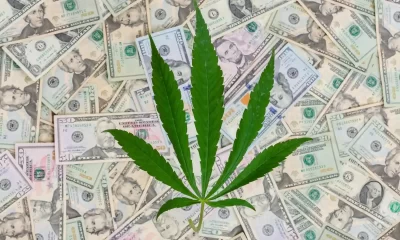
 Business2 years ago
Business2 years agoWashington State Pays Out $9.4 Million in Refunds Relating to Drug Convictions
-

 Business2 years ago
Business2 years agoMarijuana companies suing US attorney general in federal prohibition challenge
-

 Business2 years ago
Business2 years agoLegal Marijuana Handed A Nothing Burger From NY State
-

 Business2 years ago
Business2 years agoCan Cannabis Help Seasonal Depression
-

 Blogs2 years ago
Blogs2 years agoCannabis Art Is Flourishing On Etsy




